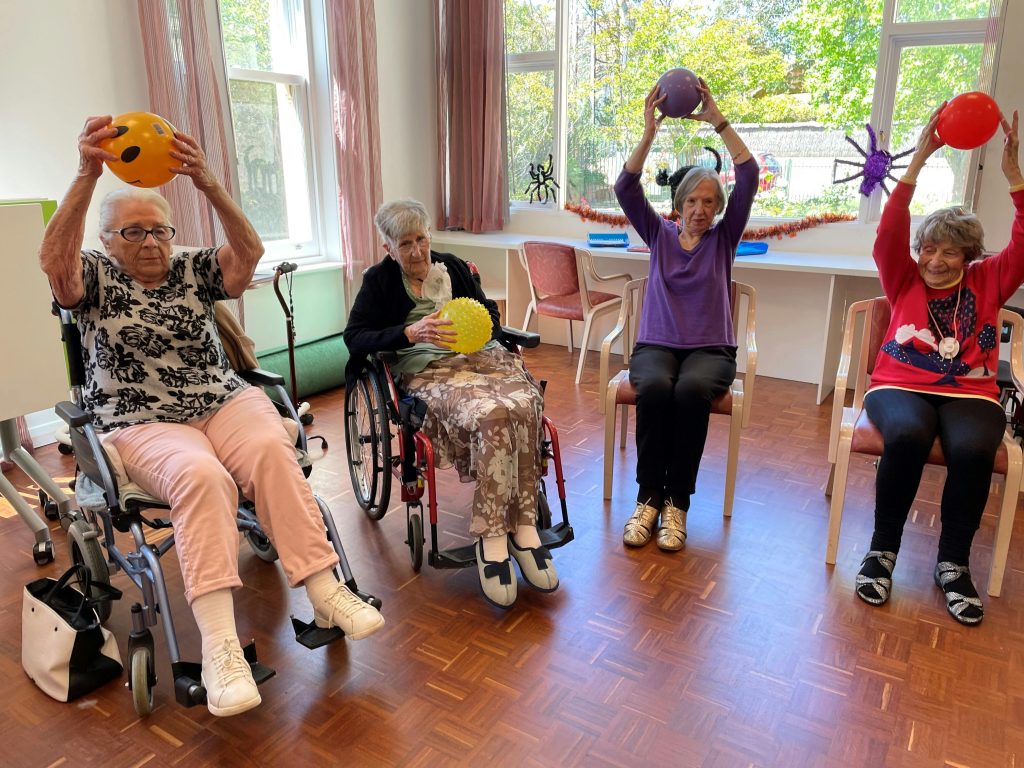Digital marketing has become an indispensable tool for assisted living facilities aiming to enhance their online presence and reach potential residents and their families. In this comprehensive guide, we’ll explore the essential strategies and tactics that can be employed to achieve success in digital marketing for assisted living facilities. By following this guide, you’ll gain valuable insights and actionable steps to outrank competitors on Google and establish a robust digital presence.
I. Introduction
The senior care industry is evolving, and so are the methods of reaching and engaging with potential residents. As more families turn to the internet for information, the role of digital marketing in promoting assisted living facilities becomes pivotal. In this section, we’ll delve into the significance of digital marketing, setting the stage for an in-depth exploration of strategies and best practices.
A. Understanding the Importance of Digital Marketing for Assisted Living
Digital marketing is not just a trend; it’s a necessity in today’s competitive landscape. Assisted living facilities need to adapt to the digital era to remain visible and connect with their target audience effectively. Consider the following key points:
- Online Search Trends: The majority of families looking for senior care options begin their search online. Optimizing digital presence ensures visibility when it matters most.
- Building Trust: An informative and engaging online presence builds trust among potential residents and their families.
- Competitive Advantage: Outranking competitors on search engines establishes your facility as a leader in the senior care industry.
II. Foundations of Digital Marketing for Assisted Living Facilities
To embark on a successful digital marketing journey, it’s essential to establish a strong foundation. This section focuses on defining your audience, setting clear goals, and aligning your marketing efforts with the overall business objectives of the facility.
A. Defining Your Target Audience
Identifying and understanding the demographics of potential residents and their families lays the groundwork for targeted digital marketing campaigns. Use the following MECE framework to guide your approach:
Demographic Segmentation
| Demographic | Description |
|---|---|
| Age Group | Segmenting by the age of potential residents and their families. |
| Location | Targeting specific geographical areas where your facility is located or aims to expand. |
| Interests | Understanding the interests and preferences of your target audience to tailor marketing messages accordingly. |
Persona Development
Create detailed personas based on the identified demographics. For example:
- Persona 1: Grace (80 years old)
- Interests: Gardening, social activities
- Concerns: Safety, healthcare
- Persona 2: Lisa (Daughter of Potential Resident)
- Interests: Work-life balance, community engagement
- Concerns: Quality of care, communication with the facility
B. Establishing Clear Marketing Goals
Clear and measurable goals provide direction for digital marketing efforts. Utilize the SMART framework:
- Specific: Define precise objectives, such as increasing website traffic, generating leads, or boosting online inquiries.
- Measurable: Set quantifiable targets to gauge success, such as a percentage increase in website visits or a specific number of leads per month.
- Achievable: Ensure goals are realistic and attainable based on the facility’s resources and market conditions.
- Relevant: Align goals with the broader business objectives of the assisted living facility.
- Time-Bound: Assign a timeline to each goal to create a sense of urgency and accountability.
III. Building a Strong Online Presence
Creating a compelling online presence involves multiple elements, including website optimization, social media engagement, and the integration of video marketing. This section explores key components to strengthen your facility’s visibility in the digital space.
A. Developing an Informative and User-Friendly Website
A well-designed website serves as the digital storefront for your assisted living facility. Ensure the website meets the following criteria:
Website Design Essentials
- Mobile Responsiveness: With a growing number of users accessing the internet via mobile devices, a mobile-responsive design is imperative.
- Intuitive Navigation: Implement user-friendly navigation to enhance the overall user experience.
- Clear Call-to-Action (CTA): Guide visitors toward desired actions, such as scheduling a tour or contacting the facility.
Content Optimization
- SEO-Friendly Content: Incorporate relevant keywords naturally throughout the website content to enhance search engine visibility.
- Quality Imagery: Utilize high-quality images that showcase the facilities, amenities, and the compassionate care provided.
B. Leveraging Social Media Platforms
Social media plays a crucial role in connecting with families and showcasing the unique aspects of your assisted living facility. Consider the following strategies:
Social Media Platforms
| Platform | Purpose |
|---|---|
| Engaging with families, sharing facility updates, and fostering an online community. | |
| Showcasing the visual appeal of the facility, resident activities, and staff interactions. | |
| Establishing professional connections and sharing industry insights and achievements. | |
| YouTube | Creating and sharing video content, including virtual tours and resident testimonials. |
Content Calendar
Develop a content calendar to maintain consistency across social media platforms. Include a mix of content types:
- Educational Posts: Informative content about senior care, health tips, and industry trends.
- Behind-the-Scenes: Showcase the daily life in the facility, staff stories, and resident activities.
- Testimonials and Success Stories: Feature positive experiences of residents and their families.
C. Incorporating Video Marketing
Video content provides a dynamic way to engage with your audience and offer an authentic glimpse into the assisted living experience. Implement the following video marketing strategies:
Video Types
| Video Type | Purpose |
|---|---|
| Virtual Tours | Provide an immersive view of the facility for families unable to visit in person. |
| Resident Testimonials | Share firsthand accounts of residents and their positive experiences. |
| Staff Spotlights | Introduce the dedicated team members providing care and support. |
| Educational Videos | Offer valuable information on topics related to senior care and assisted living. |
Video Production Tips
- Professional Quality: Invest in high-quality production to convey professionalism and build trust.
- Optimized Titles and Descriptions: Use descriptive and keyword-rich titles and descriptions for improved discoverability on platforms like YouTube.
IV. Implementing Targeted Marketing Strategies
To maximize the impact of digital marketing efforts, assisted living facilities can leverage paid advertising, email campaigns, and other targeted strategies. This section outlines actionable steps for effective implementation.
A. Paid Advertising for Assisted Living Facilities
Paid advertising on platforms like Google and Facebook allows facilities to target specific audiences and maximize visibility. Employ the following strategies:
Google Ads
- Keyword Research: Identify relevant keywords potential families may use in their search queries.
- Geotargeting: Focus advertising efforts on specific geographic areas to reach local families.
- Compelling Ad Copy: Craft engaging and informative ad copy that highlights the unique selling points of the facility.
Facebook Ads
- Audience Targeting: Utilize Facebook’s detailed targeting options to reach users based on demographics, interests, and behaviors.
- Visual Appeal: Create visually appealing ad creatives that resonate with the target audience.
- Landing Page Optimization: Ensure a seamless transition from the ad to the facility’s website with a well-optimized landing page.
B. Email Marketing Campaigns
Email marketing remains a powerful tool
for nurturing leads, maintaining communication with families, and providing valuable information. This section explores best practices for successful email marketing campaigns tailored to the assisted living industry.
Building an Email Subscriber List
- Opt-in Forms: Place strategically positioned opt-in forms on the website to encourage visitors to subscribe to newsletters.
- Incentives: Offer incentives such as a downloadable guide or access to exclusive content for those who subscribe.
Segmentation and Personalization
- Segmentation: Divide the email subscriber list based on demographics, interests, or engagement levels.
- Personalization: Address recipients by name and tailor content to their specific needs and preferences.
Types of Email Campaigns
- Welcome Emails: Warmly welcome new subscribers and provide an overview of the facility’s offerings.
- Educational Newsletters: Share valuable content, including caregiving tips, resident stories, and upcoming events.
- Event Invitations: Promote facility events, open houses, or virtual tours via targeted email invitations.
V. Monitoring and Analytics
Continuous monitoring and analysis of digital marketing efforts are crucial for optimizing strategies and ensuring a return on investment. In this section, we explore the utilization of data for informed decision-making and adapting strategies based on analytics insights.
A. Utilizing Data for Informed Decision-Making
Google Analytics
- Traffic Analysis: Monitor website traffic to understand user behavior, popular pages, and sources of traffic.
- Conversion Tracking: Set up conversion tracking to measure specific actions, such as form submissions or inquiries.
Social Media Analytics
- Engagement Metrics: Track likes, shares, comments, and overall engagement across social media platforms.
- Follower Growth: Monitor the growth of followers and identify successful content strategies.
B. Adapting Strategies Based on Analytics Insights
- Identifying High-Performing Channels: Allocate resources to channels that generate the most traffic and conversions.
- Content Optimization: Modify content based on the performance of specific blog posts, videos, or social media content.
- A/B Testing: Experiment with different elements in ads or emails to determine what resonates best with the audience.
VI. Conclusion
In conclusion, digital marketing is a dynamic and indispensable aspect of promoting assisted living facilities. By embracing the strategies outlined in this comprehensive guide, facilities can position themselves as leaders in the industry and effectively connect with potential residents and their families.
A. Recap of Key Strategies for Successful Digital Marketing
- Understanding Your Audience: Tailor marketing efforts to address the specific needs and preferences of potential residents and their families.
- Setting Clear Goals: Establish SMART goals aligned with the broader objectives of the assisted living facility.
- Building a Strong Online Presence: Invest in a user-friendly website, engage on social media, and leverage the power of video marketing.
- Implementing Targeted Strategies: Utilize paid advertising, email campaigns, and other targeted approaches to reach and convert your audience.
- Monitoring and Analytics: Continuously analyze data to make informed decisions and adapt strategies for ongoing success.
By consistently applying these strategies and staying attuned to industry trends, assisted living facilities can navigate the digital landscape successfully, outranking competitors on Google and attracting the right audience for long-term success.



